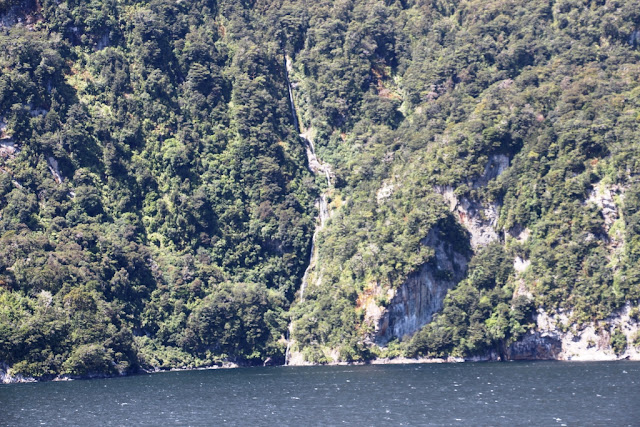Several large islands lie in the sound. The
upper reaches of the sound are steep-sided, and the high precipitation of the
region leads to hundreds of waterfalls cascading into the sound during the
rainy season.
 |
| Albatross |
It is believed that Maori occasionally camped by the sound's
waters while hunting moa (now extinct) in pre-European times.
The inlet was first sighted by Europeans and Captain Cook noted
its entrance during his first voyage to New Zealand in 1770. He named it
Dusky Bay. On his second expedition he spent two months exploring the
sound, and used it as a harbour, establishing workshops and an observatory. It
is believed his crew brewed the first beer in New Zealand during his stay.
He encountered some Maori with whom he had friendly relations. Later they
seemed to have disappeared and it was speculated their countrymen had killed
them, perhaps for the presents Cook gave them.
Cook saw the place as a good harbour for ships entering the
Pacific from Europe by the shortest route, highlighting its maritime
significance and overlooking its land-locked character. This gave it an unusual
prominence in earliest European visits which disappeared as Europeans became
more familiar with New Zealand's geography.
Dusky was consequently used as a harbour by other European
navigators and merchant ships in the late 18th and early 19th centuries. From
1792 it became a favoured site for seal hunters.
Men landed by Captain William Raven from the Britannia in
that year built the first European house in New Zealand and the first ship in
Australasia, and the first European woman known to have been in New Zealand was
recorded as a visitor in 1793. A group of 244 Europeans was stranded in
Dusky Sound in 1795, which included two women, the first known to have lived
ashore. The last of this group left in 1797.
Access to the sound is by sea or air only, with no roads reaching
the coast at this point. However, the Dusky Track stretches to the upper
reaches of the sound from lakes Manapouri and Hauroko. An attempt was made in 1903 to construct a
road from Dusky Sound to Lake Manapouri, but it was never completed,
terminating abruptly on the western side of Loch Maree.
 |
| Seal Island? |




































No comments:
Post a Comment